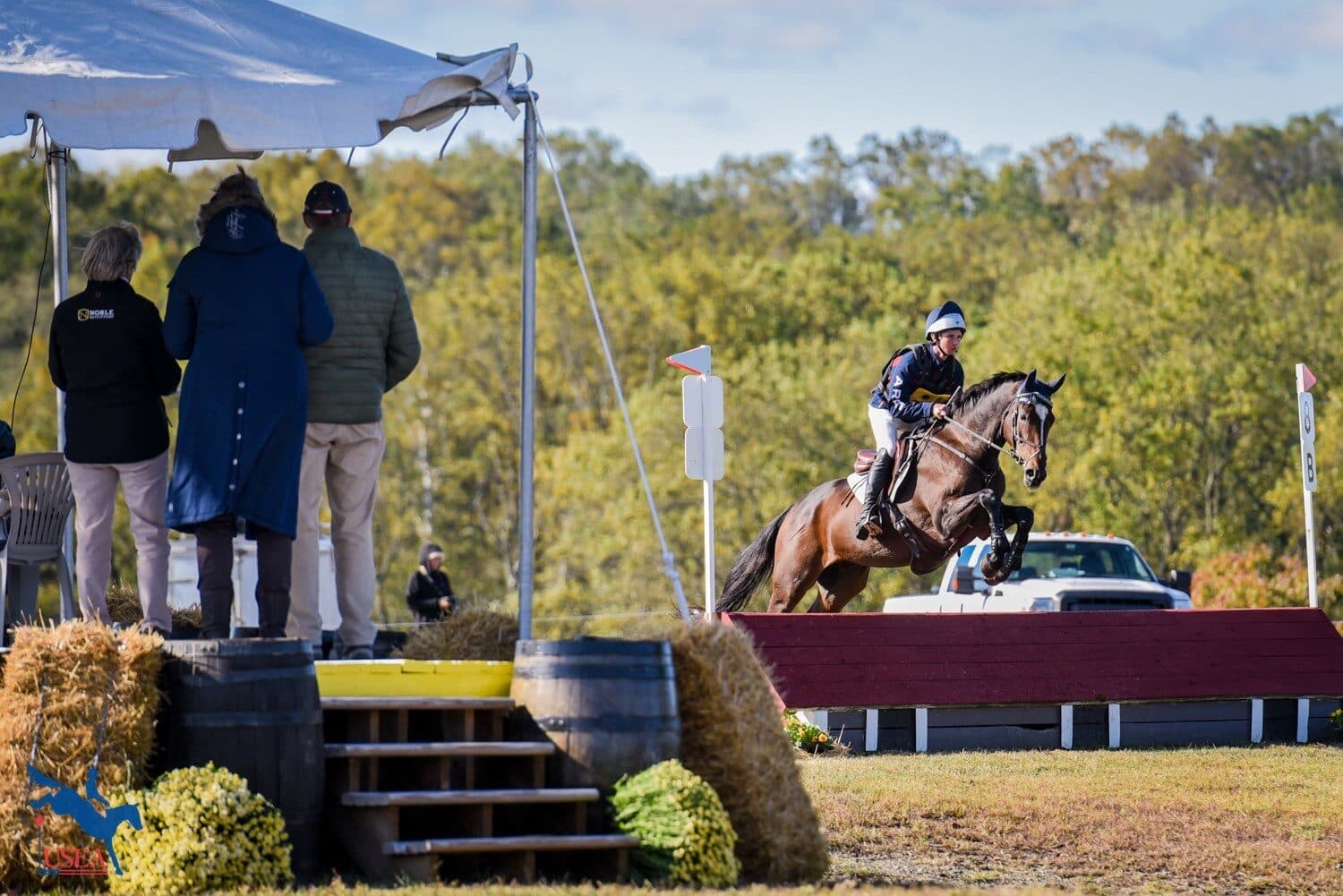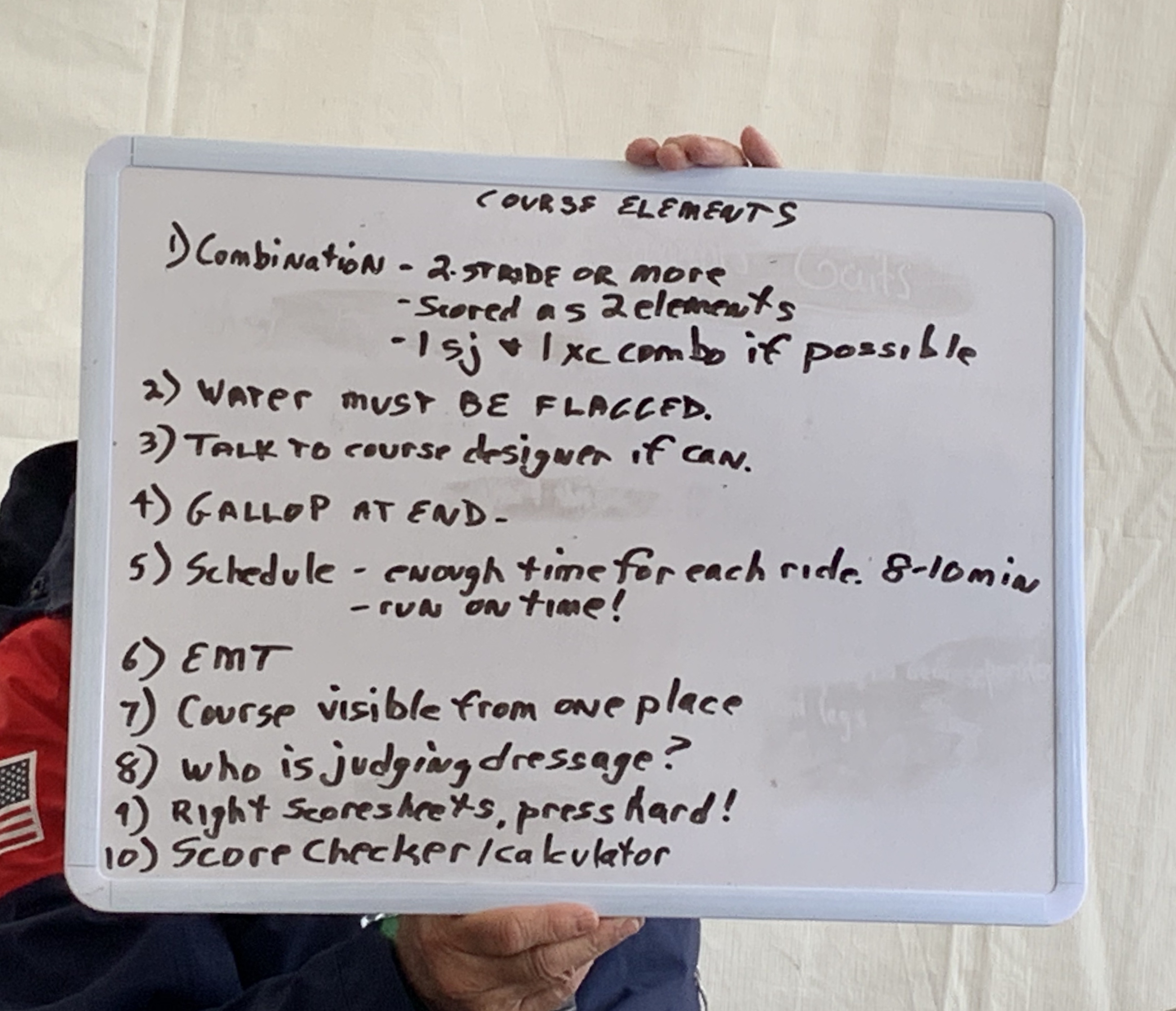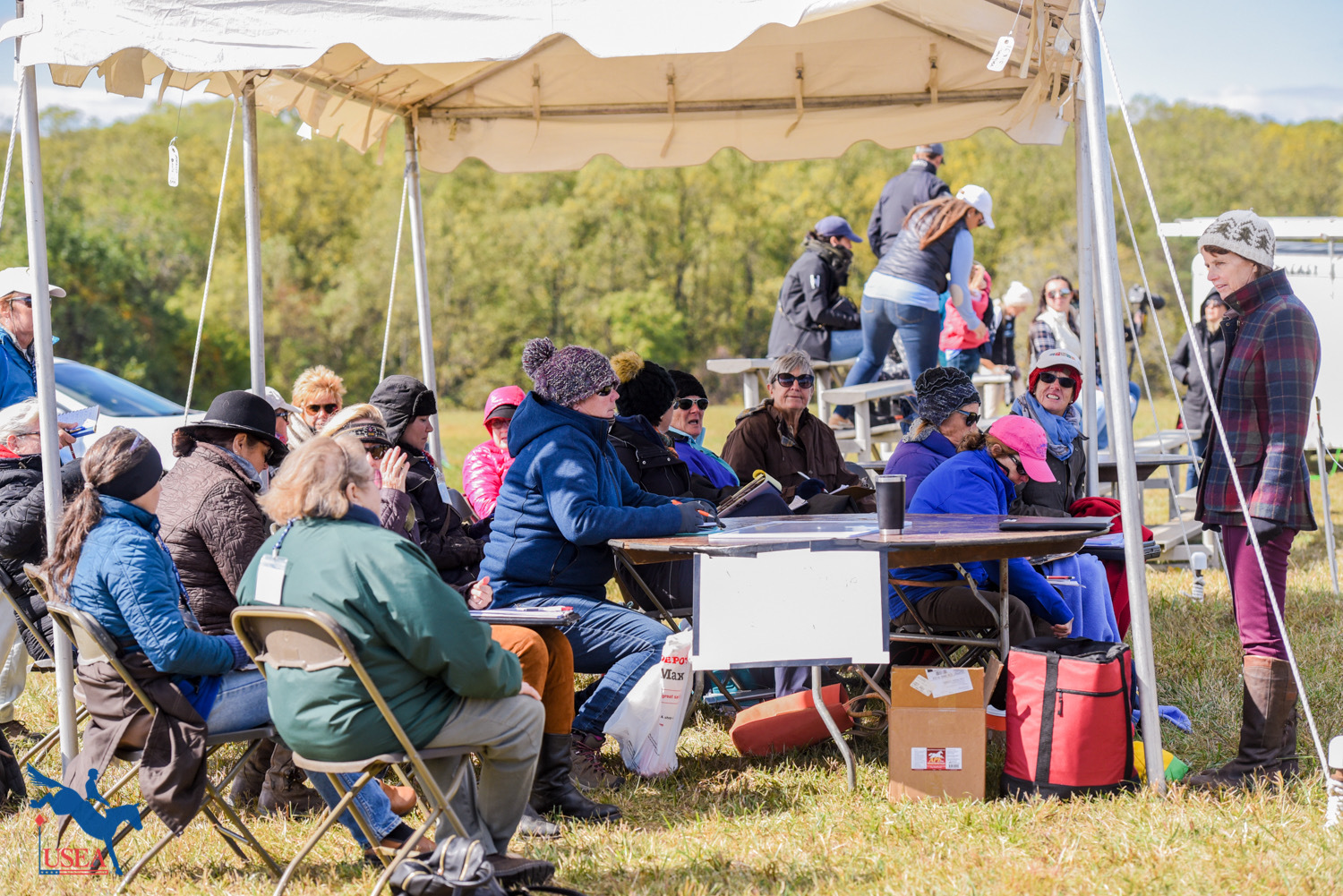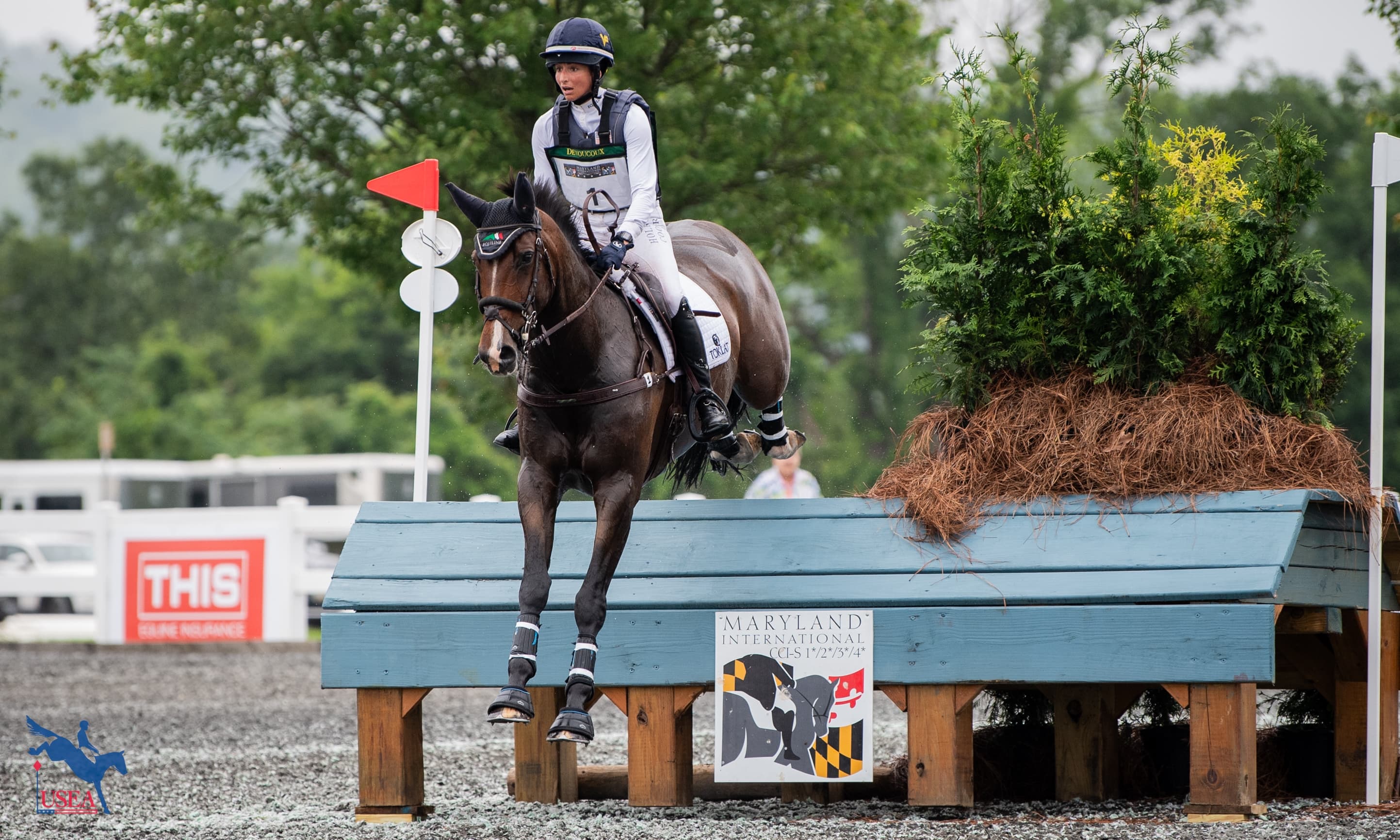That Horse: Looking for Four- and Five-Star Potential

We all have that "aha" moment when we see THAT HORSE. You know the one; the horse that shows off three lovely gaits in the dressage ring and demonstrates scope and a big ground-covering gallop as it smoothly and eagerly jumps its show jumping and cross-country courses. THAT HORSE takes our breath away; reminding us why we love horses and the sport of three-day eventing.
Last week I had the opportunity to attend the USEA Young Event Horse Judge Seminar held at Fair Hill in conjunction with the 2019 USEA Young Event Horse Championships. Marilyn Payne was the panelist and she shared a plethora of information and experience. The participants were composed of passionate judges, breeders, trainers, and riders, all eager to learn and soak up what goes into judging and placing a top event horse.
Being a relatively new USEF ‘r’ Eventing Judge, I was thrilled to have the time and opportunity to join this free seminar. I’ve had a year of significant stress. Being immersed in two days of watching quality horses was like sitting back and having some uninterrupted time to savor a fine wine. And it was filled with a lot of THAT HORSE.

On Thursday, we met in a tent above the dressage rings. It was a chilly windy morning and the tent had a mind of its own. There were moments I thought we all might be taken away like Dorothy in the Wizard of Oz. Everyone introduced themselves and Marilyn began by initiating a discussion on YEH rules, basics, procedures, judging methodology, and scoring. It is quite different than judging a dressage test. The rider executes a basic test written specifically for the expectations of a 4-year-old or 5-year-old. The judge is looking at the gaits and overall rideability and determining if the basic training is correct. The score sheet reflects those determinations. It relies on scores from 1-10, as well as comments. You can use decimal points as well as whole numbers. If the horse has a minor inconsistency, due to outside influences such as flags blowing or loud noises, it’s not penalized. The judge must remember these are young horses. The judge is looking for the overall impression and he or she bases their overall judgment and comments on what they are seeing at that time and on that particular day.
After lunch we had the opportunity to judge six horses and discuss our marks, comments, and overall placing. Since I am used to judging each movement it took a test or two to get in the groove and navigate a YEH Test. Once in the swing of things, I was pleasantly surprised that when we went over the tests my marks and comments were not far off of Marilyn’s. Phew!

The end of the first day was spent walking the jumping test courses with my fellow friend and judge Heather Gillette. We carefully analyzed the courses; walking distances, measuring fences, and discussing our likes and dislikes. The courses incorporated five show jumping fences including a two stride (ascending oxer to vertical) followed by immediately galloping onto a 10-fence cross-country course. The cross-country portion had a variety of fences including a water jump. It finished with another gallop of approximately 150 meters, which was also judged.
We stared Friday by gathering at cross-country. We were lucky that it wasn’t as windy as Thursday - but it was still quite chilly, making me thankful I had long underwear, layers, and a hat. As a group, we discussed the competition rules, which again were quite different from a standard recognized USEA horse trial. We talked about judging methodology, judging the gallop, and what a judge wants to see in a young horse for upper level potential. At YEH Championships the 4-year-olds have a minimum of height at 2’11” to maximum 3”3” and the 5-year-olds have a minimum of height at 3”3” to a maximum of 3”7”.
To get rolling, Marilyn had us observing several partial rounds, which we scored and discussed. This allowed Marilyn to teach us what to look for. After we felt comfortable we judged six horses and discussed our scores and reasoning. I found the jumping phase fascinating.
The judge scores each individual fence from 1 to 5, and then gives marks from 1 to 10 for an evaluation of rideability, between fences, the open gallop, and the overall general impression. Decimal points are allowed and again there are places on the score sheet for comments.

Giving a score for each fence makes you think and react quickly. Although you are scoring each fence you must also take into consideration the entire picture/course and how the horse negotiated it. A simple pleasant “hunter type” round from a horse with little scope or attack of the fences shouldn’t be the winner. The amateur or senior rider (like myself) might love this horse. But it’s the horse that has scope and a fabulous jump with bascule and a ground-covering, effortless gallop that is more desirable as a potential upper level horse, even if that horse misses at one or two fences. Given the rules differ from horse trials one sees some odd results. For example, one horse placed in the top five in the 5-year-old division after jumping the wrong last fence. The rider was told of her error and was allowed to come back in and jump the correct final fence. At a horse trial that would be an elimination.
I finished the two days with a ton of new knowledge and understanding of what is expected of these horses and how to judge them. It was particularly thrilling to see a Thoroughbred rescued from the kill pen just two years ago finish second in the 5-year-old Championship. Congrats to Ears, Kikki Dalesandro Scherrer, Erin Sylvester, and Kelly Smith of Omega Horse Rescue. What a testimonial on how raw talent, good nutrition, and proper training can produce an upper level horse.
I am very grateful for the time and energy both Marilyn Payne and the USEA has put into this program. It is extremely valuable and I hope it will continue to grow and obtain interest from our members. If you have the opportunity, I encourage you to attend one of these seminars.
Annemarie Cochrane is an adult amateur USEF “r” Eventing Judge and an equestrian sales representative in the Mid-Atlantic. She lives in Elverson, Pennsylvania with her husband.














